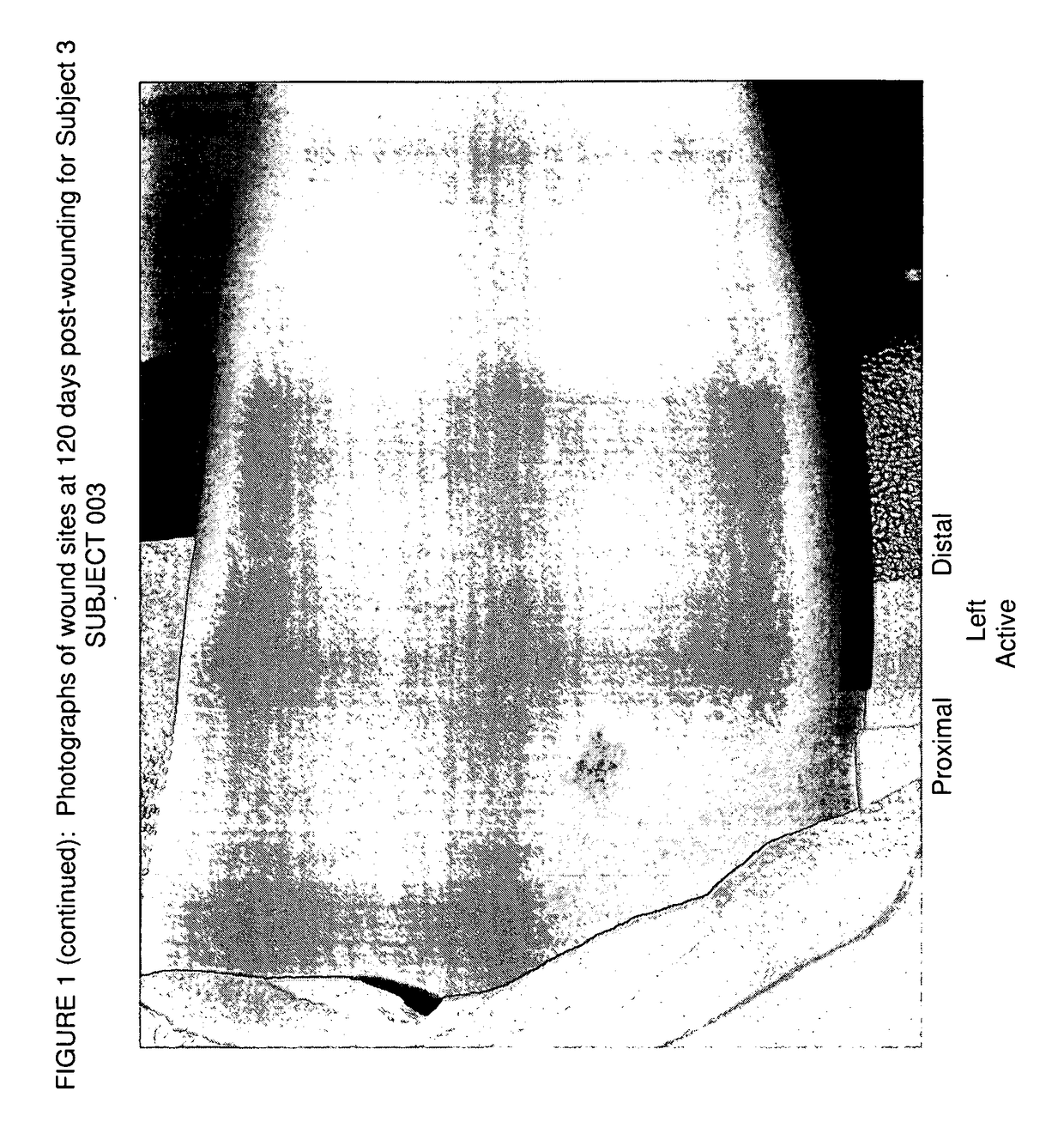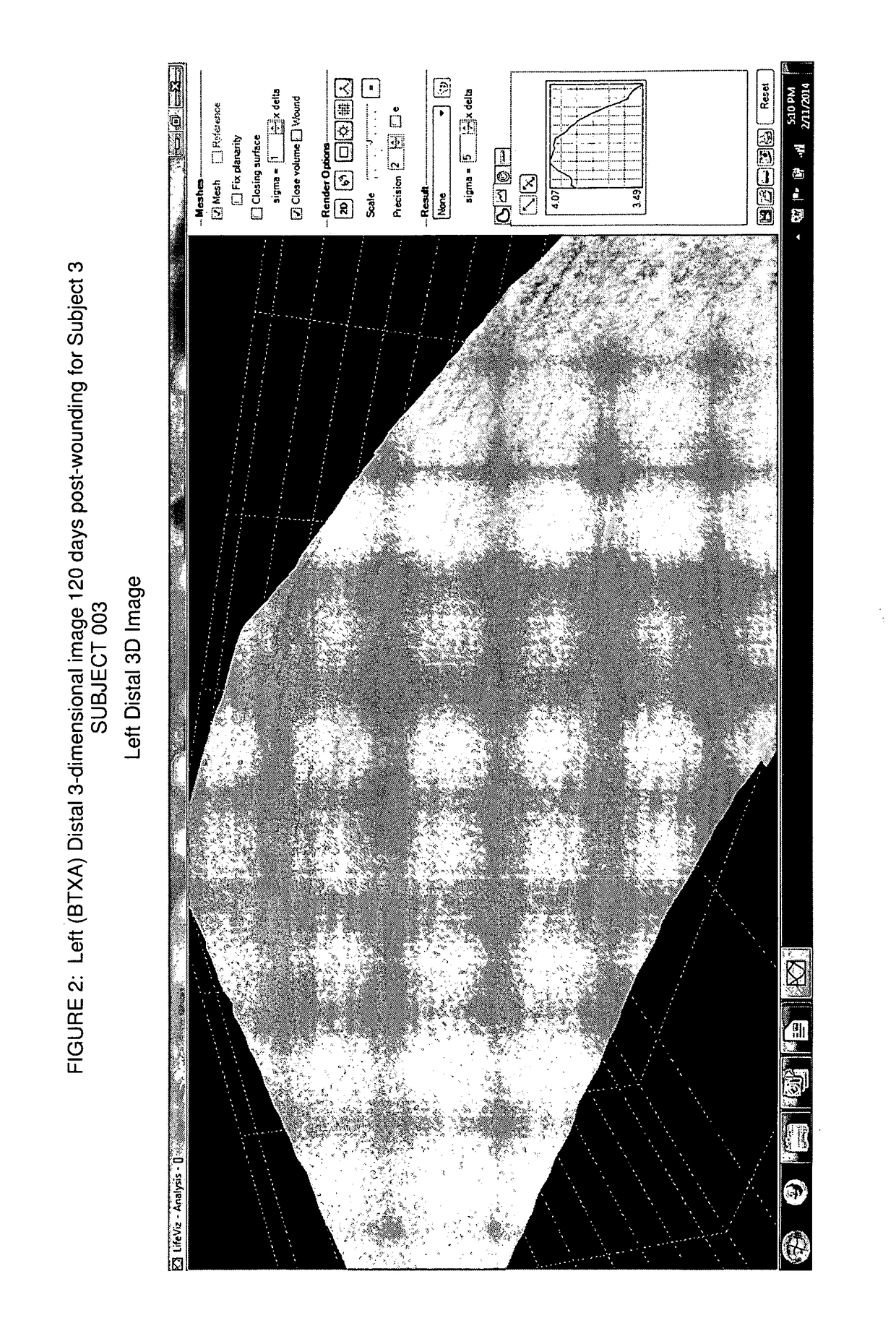Prophylactic normalization of cutaneous wound repair
a cutaneous wound and normalization technology, applied in the field of cutaneous wound normalization, can solve the problems of pathological scars, high scar formation risk of patients undergoing surgical procedures, physical and psychological morbidity, etc., and achieve the effect of reducing scar formation and improving healing outcom
- Summary
- Abstract
- Description
- Claims
- Application Information
AI Technical Summary
Benefits of technology
Problems solved by technology
Method used
Image
Examples
example 1
[0117]A clinical study in healthy human volunteers was conducted to examine the safety and effects of Xeomin® (incobotulinumtoxinA) in the prophylactic treatment of cutaneous wound repair, relative to placebo by administering intradermal injections into the skin in the margins of cutaneous wounds and determining the levels of TGFβ1, 2, and 3 in biopsy samples of wounds treated with Xeomin® and placebo. Clinical improvement of scar cosmesis in several wounds was evaluated by the Principal Investigator and by the subject at day 120. TGFβ1 levels before and after treatment were measured via conventional peroxidase staining of the biopsy samples.
[0118]Study Design
[0119]A single-center, prospective, double-blind, randomized study of approximately 30 subjects was performed. The subjects were administered superficial intradermal injections of Xeomin® (Merz Pharmaceuticals) on two wounds and placebo on the other two wounds (i.e., administered in the wound margin within 1 cm from the wound) ...
PUM
| Property | Measurement | Unit |
|---|---|---|
| angle | aaaaa | aaaaa |
| angle | aaaaa | aaaaa |
| time | aaaaa | aaaaa |
Abstract
Description
Claims
Application Information
 Login to View More
Login to View More - R&D
- Intellectual Property
- Life Sciences
- Materials
- Tech Scout
- Unparalleled Data Quality
- Higher Quality Content
- 60% Fewer Hallucinations
Browse by: Latest US Patents, China's latest patents, Technical Efficacy Thesaurus, Application Domain, Technology Topic, Popular Technical Reports.
© 2025 PatSnap. All rights reserved.Legal|Privacy policy|Modern Slavery Act Transparency Statement|Sitemap|About US| Contact US: help@patsnap.com



